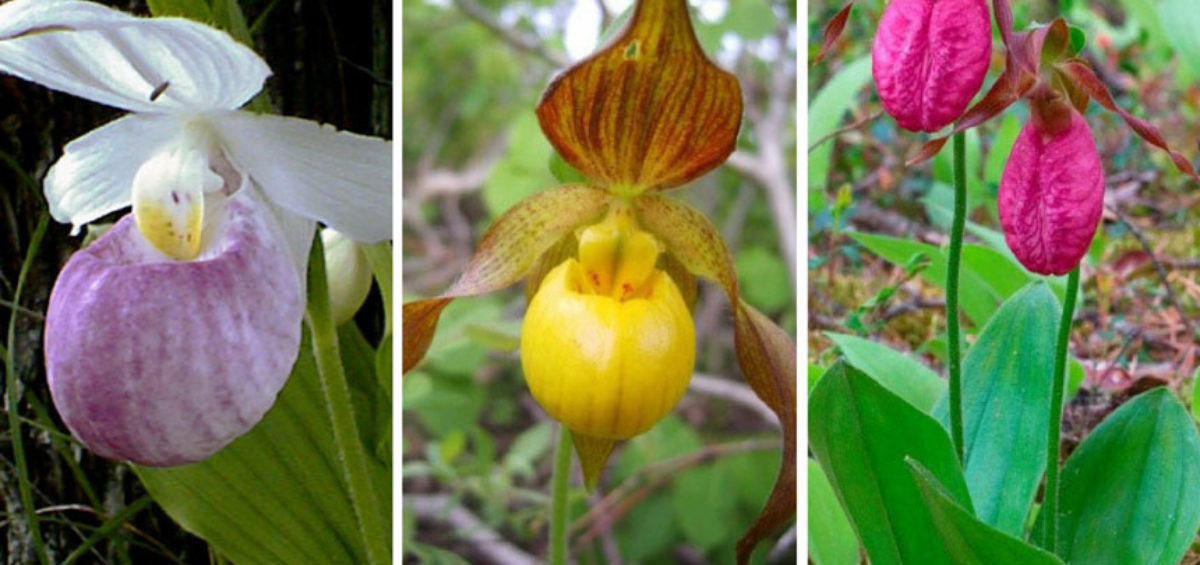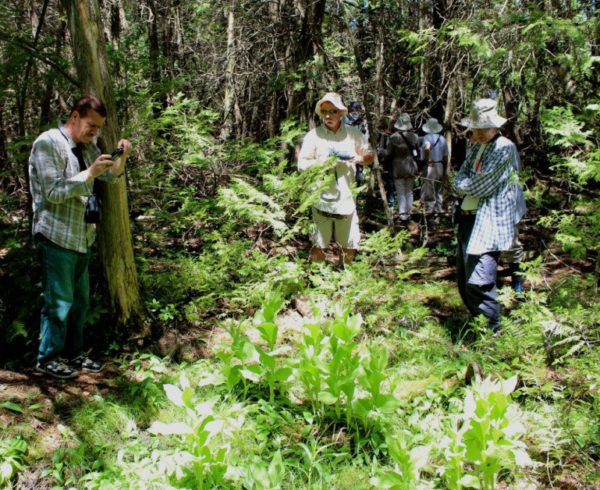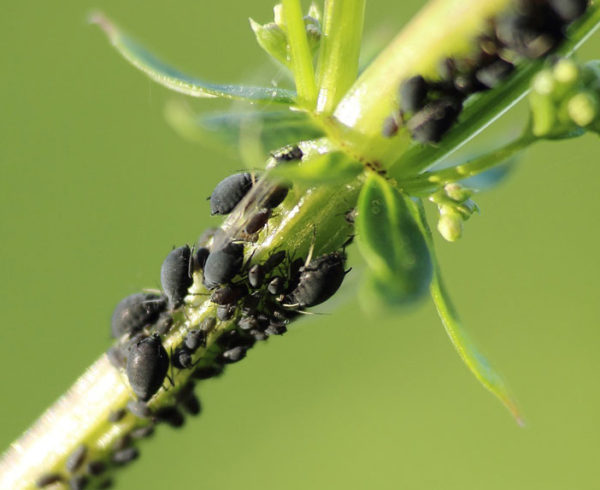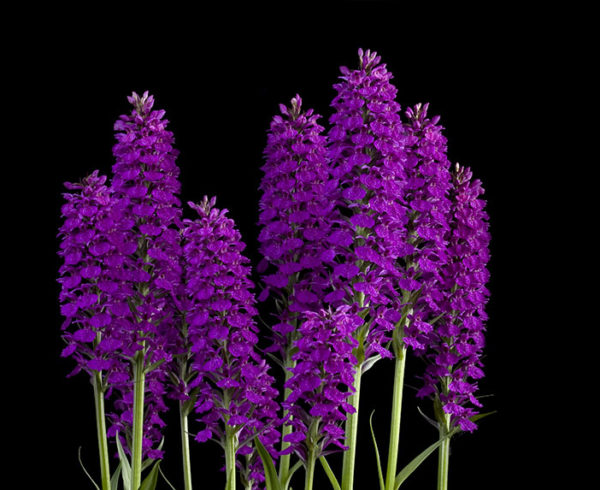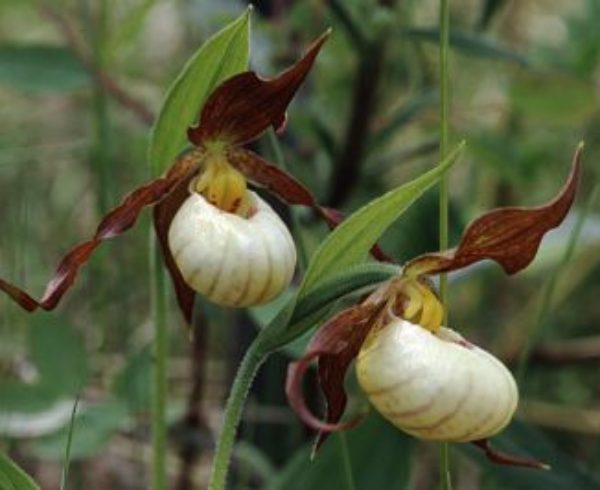No matter where you live in Canada you will find orchids. I’m not talking about the ones in containers at your local grocery or big box store, or those at your florist’s or neighbourhood nursery. The ones I’m referring to also don’t boast fancy cultivar names or hefty price tags. Instead they will cost you nothing above some careful research and preparation plus a trip or three, with the only disadvantage being that, once you find them, you can’t take them home.
I am, of course, speaking about our native orchids, the ones that grow here naturally and which should always be left undisturbed where they are. Now if it astonishes you to learn that these orchids can be found in every province and territory and in all sorts of terrain—mountains, prairies, wetlands, farmlands, beaches, forests, the rugged Canadian Shield—even tundra—you are not alone.
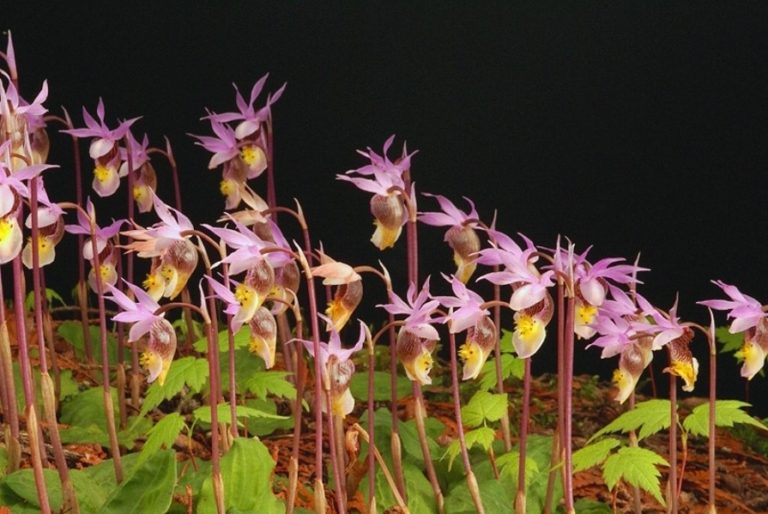
The Fairy Slipper (Calypso bulbosa) is one of our most spectacular species. It makes its home in wet coniferous forests and bogs across Canada save in Nova Scotia and P.E.I.
Photo Credit: Thomas Sampliner
All told 74 native orchid species plus three exotics share this vast and bountiful land with us. They are not evenly distributed but every province and territory has some. Ontario’s “deep south” peninsula gives that province the greatest number, at 62, but other jurisdictions are hardly depauperate. Québec and New Brunswick boast 50 and 43, respectively, while Newfoundland and Labrador, Nova Scotia, B.C., and Manitoba in order claim 39, 38, 37, and 36. Petite P.E.I. surprises with 28, Saskatchewan claims 27 and Alberta 24. Perhaps most astounding are the Northwest Territories’ 19, the Yukon’s 17, and Nunavut’s 13. Caribou and Arctic fox surely wander past our orchids on their travels!
True, such numbers can’t compare with the thousands of species found in countries closer to the Equator where orchids are thought to have originated. Yet many of those we’re blessed with are strikingly showy and often fragrant of such rapturous aromas as spice, cloves, vanilla, and raspberries, while even those with small flowers reveal fascinating features that charm and intrigue.
Consider these generic examples, species of which grow across Canada:
- Lady’s Slipper orchids (Cypripedium species) bloom from mid-May to mid-July. Their blooms are large and brilliant, and some are wonderfully fragrant.
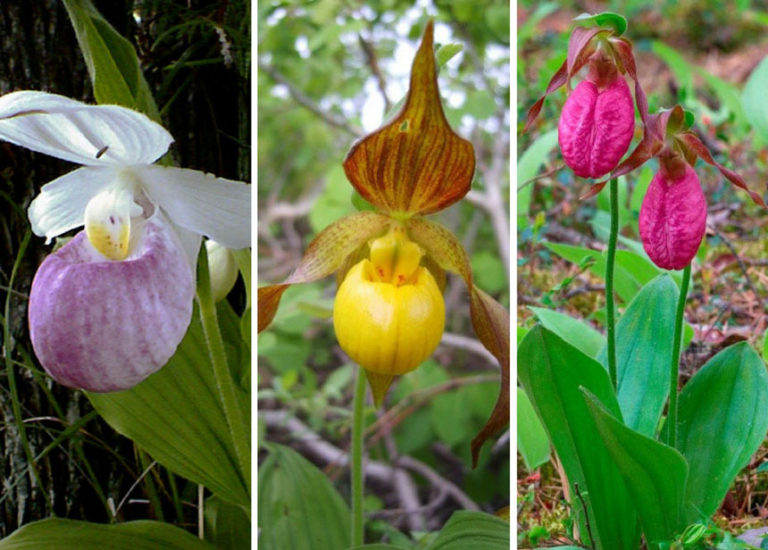
Showy Lady’s Slipper (Cypripedium reginae) at left, Large Yellow Lady’s Slipper (Cyp. parviflorum var. pubescens) centre, and Pink Lady’s Slipper or Moccasin flower (Cyp. acaule) at right.
Photo Credit: Kevin Tipson, left; Henry Glowka, centre, Ben Rostron, right - Rein or Bog orchids (Platanthera species) bloom from early June to mid-August. Some have strikingly fringed lips, and several have sweet scents.
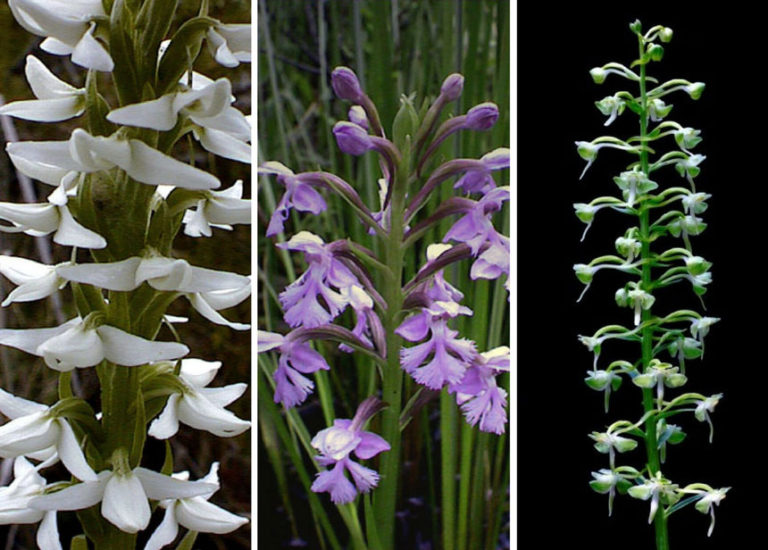
Tall White Bog Orchid (Platanthera dilatata) at left, Small Purple Fringed Orchid (Plan. psycodes) centre, and Round-Leaved Rein Orchid (Plan. orbiculata) at right.
Photo Credit: Kevin Tipson, left and centre; Ben Rostron, right - Ladies’ Tresses orchids (Spiranthes species) flower from mid-June right up to frost. Their flowers are small and white, but numerous and often fragrant.
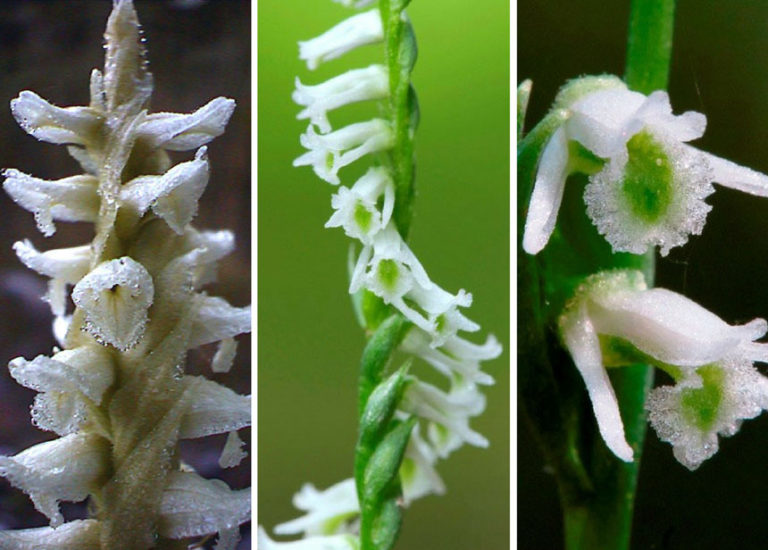
Hooded Ladies’ Tresses (Spiranthes romanzoffiana) at left, and Slender Ladies’ Tresses (Spir. lacera) at centre and right. Photo Credit: Kevin Tipson, left, Ben Rostron, centre and right.
This necessarily swift survey can barely touch on the richness of our “backyard” orchid inheritance. Left for you to discover are spectacles with such marvellous monikers as the Dragon’s Mouth, the Ram’s Head, the Showy Orchis, the Rose Pogonia, the Coral-roots, the Rattlesnakes, the Twayblades, and more. Find them in the wild and your eyes and mind will widen in amazement at the fact that what we lack in numbers we more than make up for in quality. You’ll likely be swept by a deep sense of humility at the privilege to witness these wondrous wild plants growing within a jaunt of where you live.
So what’s keeping you in your seat? The perfect time for discovery walks is at hand! Call society friends and check the COC website under Orchid Information/ Canadian Native Orchids/Native Orchids of Canada for what’s in your area. Then contact local park, conservation, and ecological reserves for the likely best spots, pack cameras and lunches, and hit the road and trails in high spirits! If you find a local naturalist to lead you to your first finds, all the better.
Your outings should prove exciting, educational, inspiring, healthful, bonding, and, above all, fun! However, before starting out make sure that everyone agrees to these few important rules of orchid etiquette:
- Go in small groups and walk single file to minimize habitat damage. Stick to trails when possible, and NEVER WALK on quaking sphagnum mats. They may suddenly give way and plunge you into the depths below.
- Tread carefully! Our orchids, all terrestrials, have extensive, sensitive root systems and symbiotic relationships with soil fungi, both of which can be easily damaged by footfalls and heavy packs placed even a metre away.
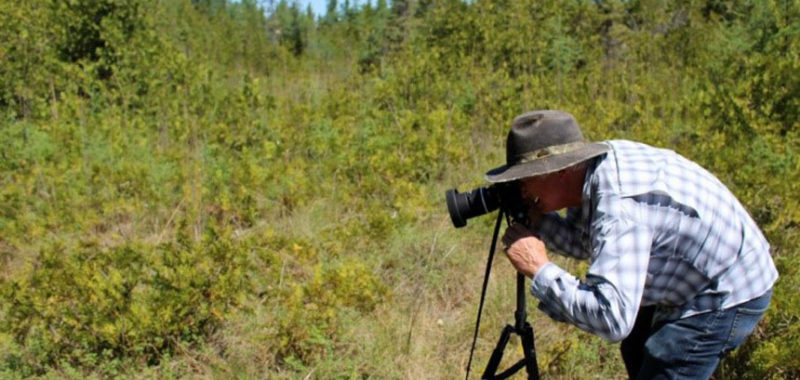
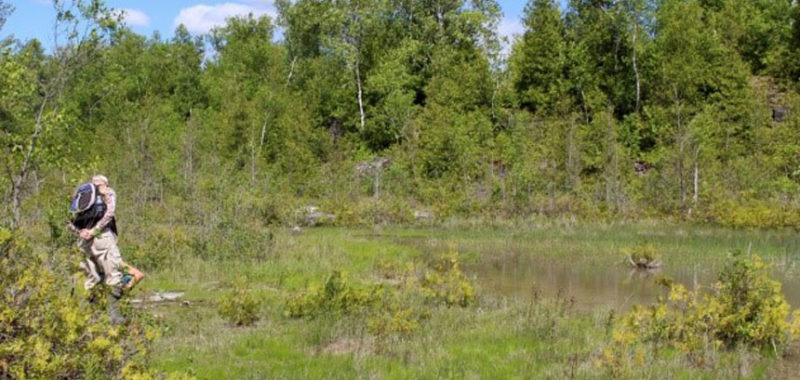
The margins of fens and other wetlands are good places to explore for native orchids.
Photo Credit: Tom Shields
- For the same reason, use telephoto lenses to get close-ups. Early morning and late afternoon usually offer the best light. If other vegetation interferes, tie it temporarily out of the way with string.
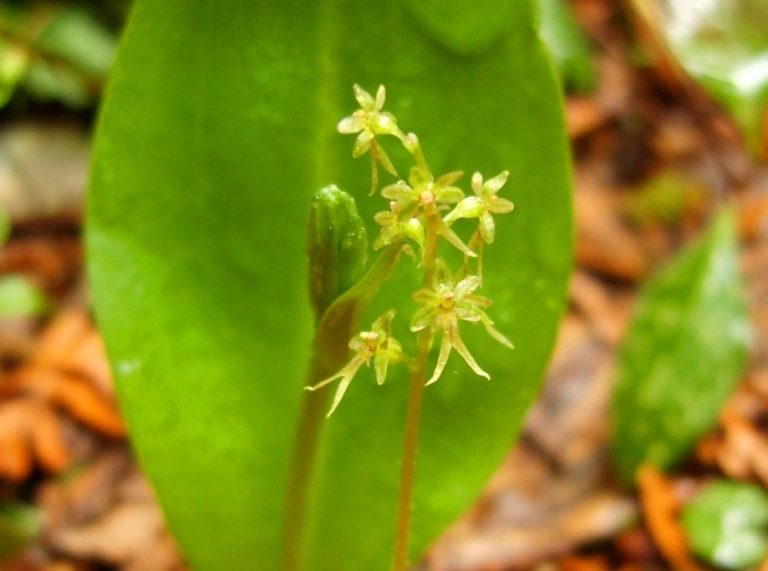
The diminutive flowers of the Heart-Leaved Twayblade (Neottia [Listeria] cordata) are nevertheless fantastic. This orchid can be found in every province and territory.
Photo Credit: Henry Glowka
- Keep records of where and when you went and what you saw, but keep them close! Poaching and habitat destruction threaten many orchid populations. Illegally digging up our orchids or picking their flowers almost always kills the plants. Trust only those with a resolute and testable commitment to conservation with your newfound knowledge.
Strike out on these pathways of adventure and the bounties for you and your fellow explorers will be immeasurable and lasting. Patches of land you once passed as uninteresting may prove irresistibly worth investigating.
Each wild species you find will reveal relationships with the plants around it, and with the soil, light and water levels, pollinators, and climate on which it depends. Parallels between these requirements and those of the captive orchids in your care should emerge, such as the need for both water and air at the roots. Witnessing our wild orchids should open your mind as to how precise orchid needs are and give you a powerful perspective on their need for protection. It may even make you a better grower.
There is a wealth of wonder at your doorstep, and the thrill and rewards of that discovery are as close as your willingness to embrace the task.
_Tom Shields
Tom Shields is the COC’s Conservation Officer.

